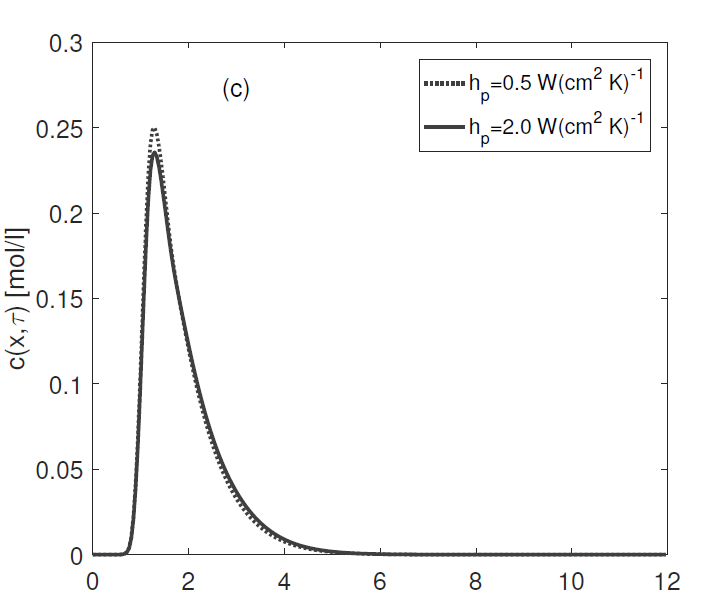Numerical Simulation of Nonlinear and Non-Isothermal Liquid Chromatography for Studying Thermal Variations in Columns Packed with Core-Shell Particles
Keywords:
Non-isothermal chromatography, Non-linear isotherm, One-dimensional lumped kinetic model, High-resolution schemeAbstract
A high-resolution flux-limiting semi-discrete finite volume scheme (HR-FVS) is applied in this study to numerically approximate the nonlinear and non-isothermal flow of one-dimensional lumped kinetic model (1D-LKM), for a fixed-bed column loaded with core-shell particles. The developed model comprise a system of convection-dominated partial differential for mass and energy balances in the mobile phases coupled with differential equation and algebraic equation in the stationary phase. The solution of the model equations is obtained by utilizing a HR-FVS, the scheme has second-order accuracy even on the grid coarse and its explicit nature has the potential to resolve the arisen sharp discontinuities in the solution profiles. A second-order total variation diminishing (TVD) Runge-Kutta technique is used to solve the system of ODEs in time. Several forms of a single-solute mixture are produced to investigate the influences of the fractions of core radius on thermal waves and concentration fronts. Moreover, a particular criterion is introduced for analyzing the performance of the underlying process and to identify the optimal parameter values of the fraction of core radius.

Published
How to Cite
Issue
Section
Copyright (c) 2023 Abdulaziz G. Ahmad, Nnamdi F. Okechi, David U. Uche, Abdulwasiu O. Salaudeen

This work is licensed under a Creative Commons Attribution 4.0 International License.







